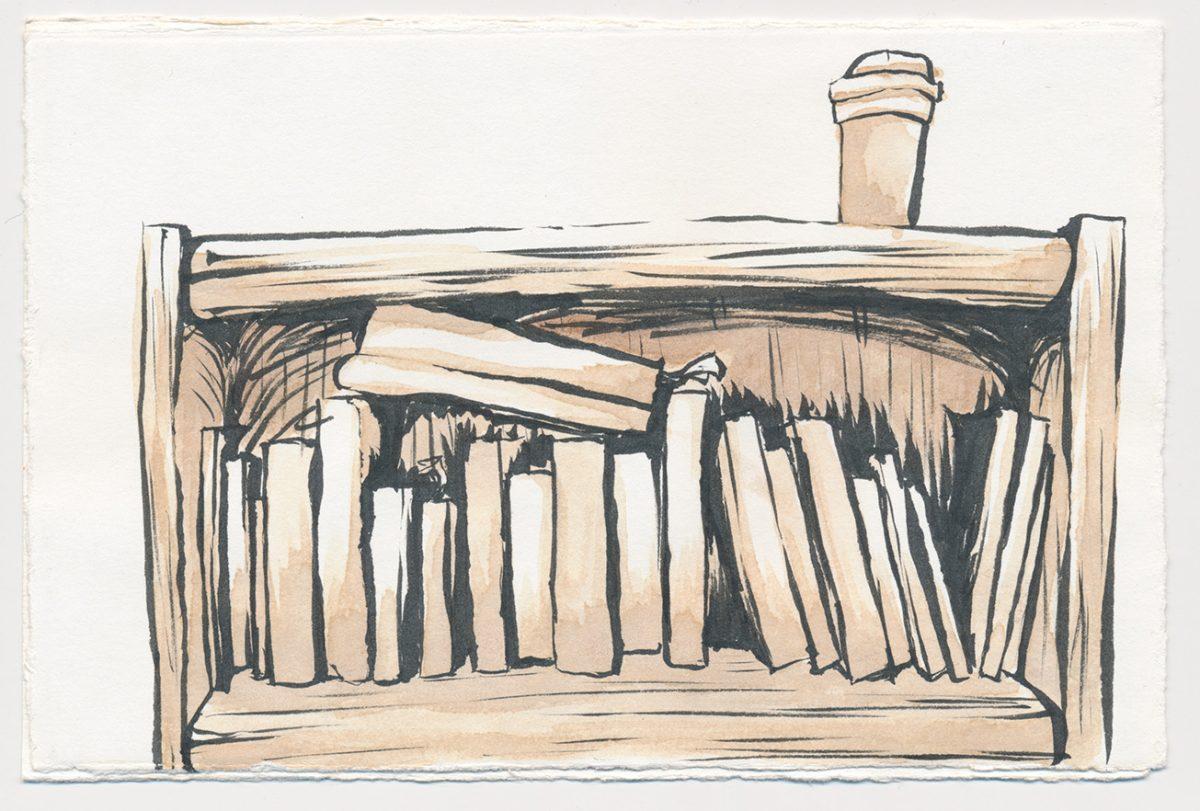Ink and coffee drawing by Miguel Montanez-Aragon ’16 | What resources are on your learning bookshelf?
The Issue: Each student learns differently, and the best ways of learning are often over-generalized as unique students are marginalized.
Our Stance: Learning is at its best when it’s a two way street between student and teacher.
Regardless of the way you look at it, students at Brophy are diverse.
This diversity mandates itself not only geographically and ethnically, but also in the way students learn.
Each student needs a different combination of teaching styles. Some prefer lectures, others activities, still others group projects.
Historically, these differences have been categorized in three ways: audio learning, visual learning and kinesthetic learning.
But the education system needs to realize that these over-generalizations don’t help teachers, especially when they deal with a combination of learners in one room. These categories are overly ambiguous and broad.
For example, visual learning can take on many forms. A student can prefer teacher demonstrations, slideshows or diagrams and still be considered a visual learner.
Regardless of a teacher’s style, catering to each type of learning effectively is very difficult. Teachers should have the responsibility to incorporate all these learning umbrellas into their instruction. But past this, it’s a student’s duty to get extra help for his specific learning needs.
Because only the student himself understands how he learns best, it is his job to seek this assistance from a teacher.
Many teachers are more than willing to cater to a student’s specific learning needs if the student comes in for help. But students need to proactively seek teachers during office hours to get this one-on-one help.
Brophy has an amazing faculty, but this faculty means less and less to each student unless he takes full advantage of the teacher’s knowledge.
Many students only talk to teachers inside class hours. These students are missing out on the wealth of information and the improved learning experience that results from going in for help outside of class.
For their part, teachers need to make sure that they are willing to work one-on-one with students in their office hour time. Teachers need to individualize and differentiate instruction when it happens in an individual setting.
This two-way street is integral to true learning. When going in for outside help, students gain a personalized teaching method and teachers gain skills of delivering information in new ways.
Having these relationships are the best way for students to learn. Although Brophy equips students with other methods of learning, such as tablets, online resources and computers, humans learn best from other humans.
Especially with the diversity of experience at Brophy, our classmates might be the best resource we have.
It is unreasonable to think that all necessary information can be found from one source, even when that source may be a computer. Rather, when students come together to learn, each can often contribute his ways of understanding and greatly improve the knowledge of the others.
Learning is something we all hope to experience. But learning must involve interacting with others.
This can be interaction with teachers outside of class through personalized learning methods, or interaction with students where each student’s contribution adds to the whole picture.
By Anthony Cardellini ’17
Staff editorials represent the view of The Roundup. Share your thoughts by e-mailing roundup@brophyprep.org or leave comments online at roundup.brophyprep.org















